The Ottawa Hospital Master Plan
The Ottawa Hospital’s new Civic campus development, which will be located on Carling Avenue adjacent to Dow’s Lake, will be the major referral centre for Eastern Ontario, Western Quebec and parts of Nunavut, and the Eastern Ontario Trauma Centre. As one of Canada’s largest acute care learning and research hospitals, the new campus will provide a full range of specialized services, research and education for those with the most complex injuries and illness.
Background of the hospital project
- 2007 - the Ottawa Hospital convened a Steering Committee to develop a Master Plan which concluded the current Civic Campus is too old and would be too difficult and costly to rebuild.
- 2009 to 2013 - the Ottawa Hospital was in discussions with the Government of Canada related to master planning for a new Ottawa Hospital campus and land requirements.
- 2014 - the Government of Canada commissioned the National Capital Commission to assist in the land transfer process to the Ottawa Hospital .
- December 2015 - the federal government requested a further review of the land options for the new campus and four sites were examined
- May 2016 to November 2016 – NCC Public Consultation and Site Selection
- December 2016 - Canadian Heritage requested that the Federal government make the Sir John Carling site available as the future location of the new campus of the Ottawa Hospital .
- May 2017 - the City’s Planning Committee recommended that staff initiate Official Plan and Zoning By-law amendment applications for this federal land use decision.
- September 2017 to January 2018 – public engagement strategy with nine open houses
- December 2017 and March 2018 – design sessions with the Urban Design Review Panel
- February 2018 - Public Services and Procurement Canada announced a 99-year lease between the Federal Government and The Ottawa Hospital for the development of a new campus.
- May to June 2018 – Official Plan and Zoning By-law amendments approved by Planning Committee and City Council through By-law 2018-198 to a new Institutional I2 Zone
Proposal master site plan
The proposed hospital site is located at 930 and 850 Carling Avenue and 520 Preston Street. The site is approximately 21 hectares in size within Ward 16 and adjacent to Wards 14, 15, and 17 (see Figure 1).
The site is irregularly shaped and bound by Carling Avenue to the north, Prince of Wales Drive and Preston Street to the east and is loosely bound by the National Capital Commission Scenic Driveway to the south and Maple Drive to the east. The Trillium line (O-Train line) bisects the eastern part of the site.
The primary access for staff and visitors is off both Carling Avenue (across from Champagne Ave) and Prince of Wales Drive, accessing the new 4 storey parking structure.
The main hospital, which is located on the top of the escarpment, will be constructed after the parking structure and once services and utilities are established. The New Hospital Building includes a Central Podium, which will be two storeys, supporting the 2.5 million square feet of hospital space. The Central Podium has two entrance points. Visitors and patients will primarily access the hospital from the parking garage, rapid transit along Carling Avenue and the Carling LRT Station, with access via a pedestrian bridge from the parking facility to the main hospital building. A covered Emergency Department ambulatory drop-off will also be available on the east side of the building for visitor and patient access. First responders and ambulance transfer services, including the ambulance garage, will access the hospital from auxiliary entrances facing west.
Two patient care towers will flank the Central Podium, with the South Tower intended to be 12 storeys and will include a Helipad on the 12th floor, and the North Tower intended to be eight storeys. The proposed eight-storey North Tower is anticipated to be expanded vertically in future phases. The Main Plaza will connect the Central Podium to the entrance from Champage Avenue and Carling Avenue, providing vehicular, pedestrian and transit-user access to the main entrance.
Building Twenty-first-century health care in the heart of the nation’s capital
Due to the size of the project, the new Ottawa Hospital will be completed in phases. The Master Plan currently outlines 10 phases.
2021: Master Site Plan approvals
2022-2023: Parking garage
2024-2026: New Hospital Central Utility Plant
2024-2028: New hospital
TBD: Potential LRT Station expansion
2024-2029: Research Tower
2029-2039:
- Carling Tower A
- Carling Tower B
- Carling Tower C
2024-2028: Rehabilitation Unit
2035-2038: New Hospital expansion
2045-2048: University of Ottawa Heart Institute expansion
Key decision points
- October 1, 2021 – Master Plan approval by Joint Built Heritage Sub Committee and Planning Committee
- October 5, 2021 – Master Plan approved by NCC Board
- October 27, 2021 – Master Plan approved by City Staff
- November 5, 2021 – Urban Design Review Panel review
- November 26, 2021 – Advisory Committee Planning Design Realty review
- January 20, 2022 – Phase 2 parking garage schematic design approved by NCC Board
- February 10, 2022 – Phase 2 parking garage endorsed by Planning Committee
- March 15, 2022- Federal Land Use Design approval granted to enable early works
- May 10, 2022 – Final Phase 2 parking garage Urban Design Review Panel review
- September 27, 2022 – Phase 2 parking garage approved by City staff
- May 21, 2024 – Phase 3 and 4 Site Plan Control approved by City staff
Previous approvals
- Master Site Plan approval
- Phase 2 Site Plan approval (parking garage)
- Planning Committee Master Plan Approval meeting minutes
- Planning Committee parking garage approval meeting minutes
- Phase 3 (Central Utility Plant) and Phase 4 (Main hospital building) Site Plan Control approval
Phase 3 and 4 Site Plan Control Application
The subject application is both the third and fourth phase of the Master Site Plan consisting of a Central Utility Plant with electrical, heating and cooling equipment (Phase 3) and the main Hospital building (Phase 4). The main Hospital building will consist of approximately 230,000 square metres of gross floor area comprising a two-storey podium, two towers (Towers A and B) which will house the majority of the patient rooms, and a Pavilion flanking the Main Entrance. The Pavillion will consist of meeting and conference rooms, an auditorium, retail spaces, a cafeteria, and will connect to the weather-protected highline pathway across the top of the four storey parking garage.
Tower ‘A’ is eight storey’s and closest to Carling Avenue and the Dominion Observatory Complex. Tower ‘B’ is twelve storeys and is located south of Tower ‘A’.
Phase 3 and 4 will also consists of landscape improvements to enhance accesses to the Hospital and will complete the construction of separated pedestrian and cycling facilities through the site on the east side of internal Roads A and B. It will also complete a multi-use pathway on the south side of the main entrance and a sidewalk on the north side to provide access to the main entrance. The relocation of existing services located within the site and offsite intersection improvements will be necessary to enable these phases.
Timelines
Important dates include:
- September 20, 2022 Accessibility Advisory Committee meeting held
- November 15, 2022 Pre-consultation with Local Community Associations held
- Q4 2022 Phase 3 and 4 Site Plan submission to the City
- Q1 2023 City’s Urban Design Review Panel Review;
- Q1-Q2 2023, Public Information Meeting, Review and Issue Resolution
- Q2 2023 NCC Advisory Committee on Planning, Design and Realty
National Capital Commission involvement
- Requires an NCC Federal Land Use and Design Approval granted under the National Capital Act by the NCC
- NCC review is guided by Project Specific Performance Criteria including integration, design excellence and sustainability
- Schematic Design to be reviewed against Federal legislation and plans, including NCC’s Plan for Canada’s Capital and the Capital Urban Lands Plan
- Will be reviewed by NCC’s Advisory Committee on Planning, Design and Realty
- Application requirements include reporting on public engagement
- Subject to NCC’s review and issue resolution – Board Approval
Stay informed and involved
- Register for future notifications about this site plan control application by providing your comments by e-mailing Stream Shen and adding File No. D07-12-22-0168 in the subject line.
- Access submitted plans and studies regarding this application online at ottawa.ca/devapps.




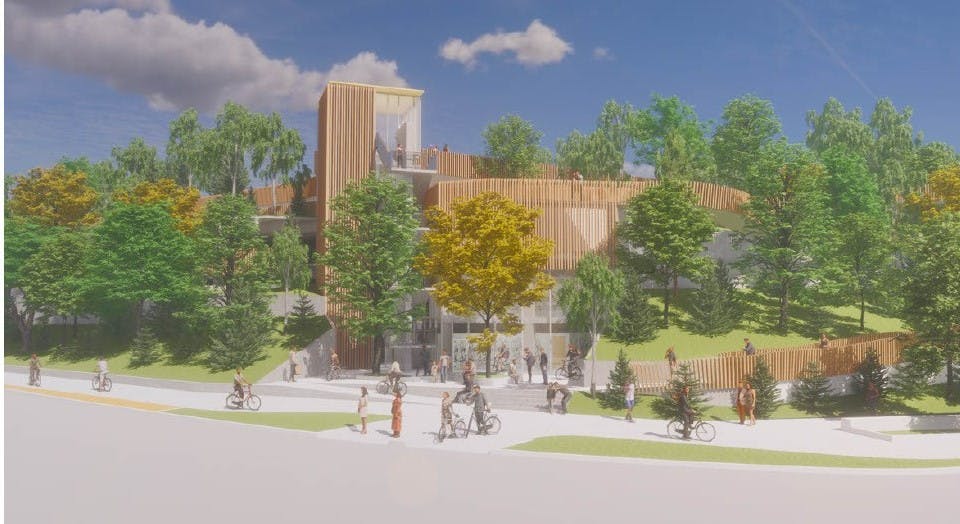
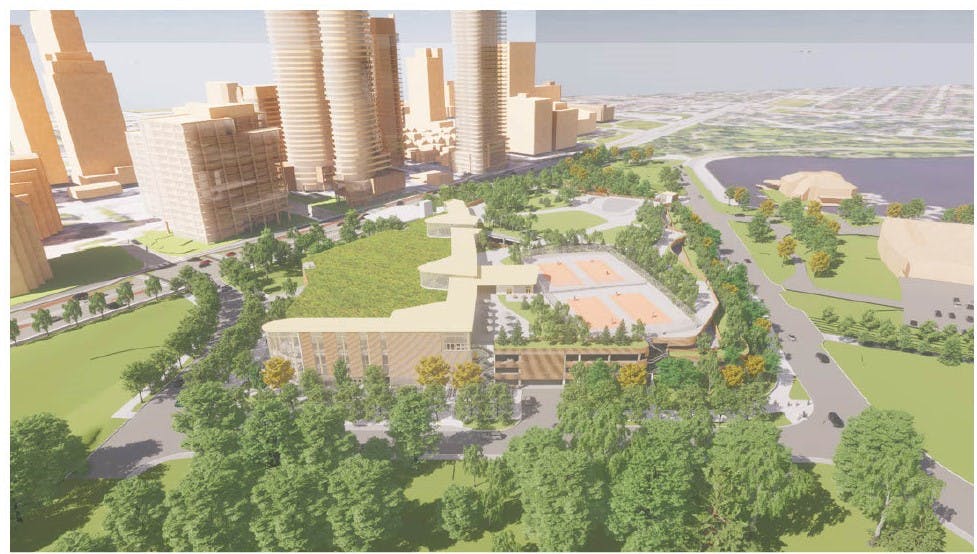
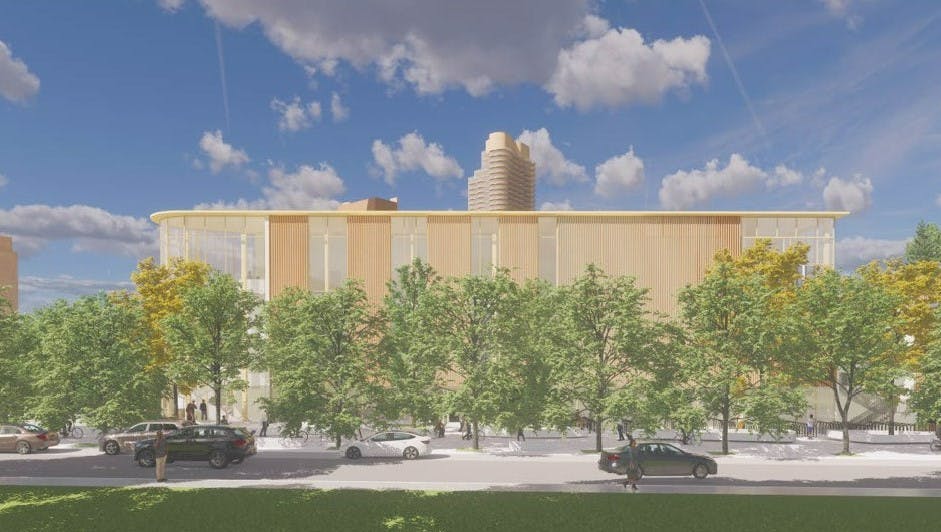
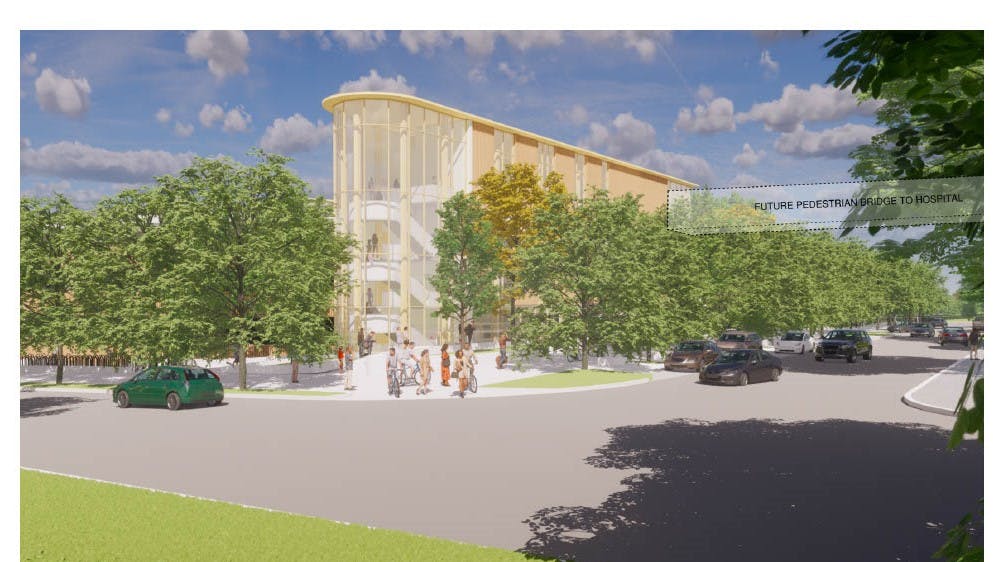
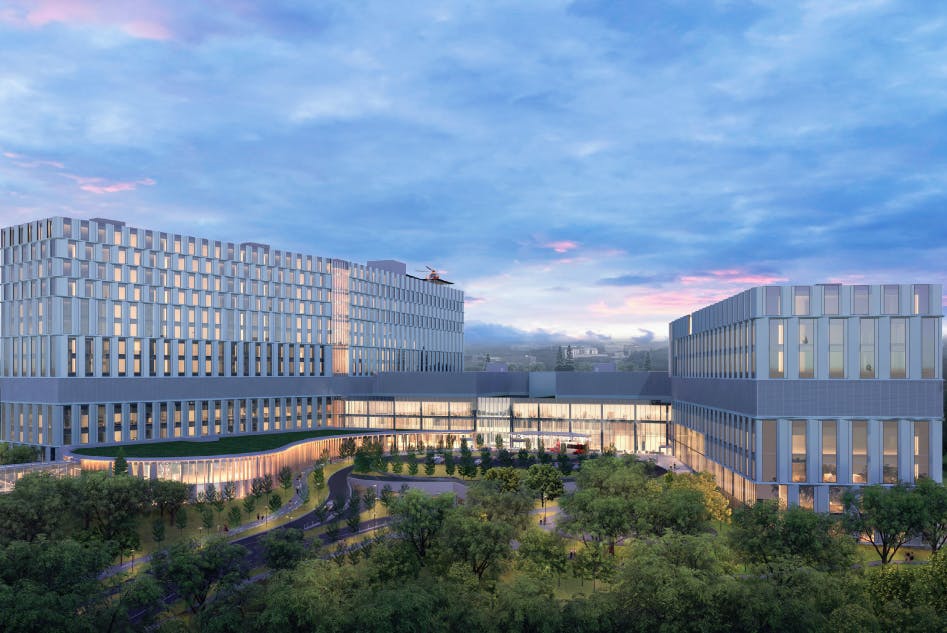
Hospital capacity is extremely important and I'm happy more specialized services will be available to residents. However, in creating this new campus, I'm concerned about the environmental impact. For example, what steps- if any- are being taken to save mature trees from construction? Planting new ones doesn't resolve the immediate need for a green canopy.
I'm also concerned about the lack of engagement and consultation with people from the Anishinabe Algonquin Nation, like the Algonquins of Pikwàkanagàn First Nation. While the city may "own" the land on paper, this is their territory, never surrendered under both Canadian and Indigenous law. Any movement forward without a positive consensus from the nation is in bad faith.
It's a great shame no hospital is being built in Barrhaven or in Stittsville, where population has grown vastly.
The Queensway is not able to over all of Nepean as well as these areas. It could have funnelled the crowds in the Civic and others, to the newer hospital, which would be much closer to the people needing care.
If the Senators move inner city, the stadium should be turned into a medical care building with multiple services, if not a hospital.
How will the future Carling LRT be incorporated into the site?
Why is there no direct bike path through the campus to Prince of Wales Dr? Also, is there a active transportation connection from the campus to Birch Dr allowing active transportation to continue to use this link? It is unclear in the drawings.
Why cut off the bike path? You should have worked around it and put the parking elsewhere. Indeed, the whole new hospital should have been put on the LRT line at Tunney's pasture.
What specifically will be treated for mental illnesses in the new Ottawa Hospital, specifically concerned with current TOH sites , and other Ottawa Hospitals ( QCH , Monfort ) none of which include specialty Drs /staffed to treat the various substance use disorders ( per DSM V) . When a hospital tells family & patient in crisis in their ED , sorry our psychiatric Dept/Unit is for psychiatric psychosis illness , if yiu want a psychiatric consult you need to get in touch with ROYAL Ottawa as we don’t treat SUD here . ROH was years ago removed status to operate as urgent care ( ED closed with provincial govt claims that SUD ED health care to be absorbed by all other Ottawa Hospital ED’s , this is not the case to date . How will new state of the art mental health unit at new Civic hospital treat this health concern of SUD , both as Urgent care and after inpatient care needs ? Experience from supporting our loved one over the past 12 years with concurrent disorders , only Dr’s at ROH treat this demographic, with very limited inpatient beds , and they operate without urgent care designation. Not even ICU beds dedicated for SUD with qualified Dr’s who have at least interned / studied addiction & substance use disorders permitted at ROH. Sadly under-serviced demographic of health care in Ottawa area. No medical supervised detox with 24x7 attendings having Addiction medicine qualifications, those Drs are only at ROH during normal weekday working hrs able to see patients .
Why not build a series of smaller distributed hospitals so that people do not have to come downtown on already congested streets (Carling-Preston & Bronson intersections)? The plan already proposes sprawl well beyond the Sir John Carling Site. Where is a full independent environmental impact study and where is a a full independent traffic analysis considering all developments proposed for the Carling/ Preston area? What are the infrastructure costs estimates for sewer, water, street services?
Apparently my comments need to be in the form of questions... Given the incompetence that the LRT inquiry exposed, and the uniformly negative feedback that the city has received on these pages, why should we not suspect that the Civic Hospital plan is similarly flawed? What is the process for initiating an independent public inquiry into the Civic Hospital's expansion plan? Should we initiate such an independent inquiry, and if not, why not?
Those in charge of this project are paying attention to the recent scathing LRT inquiry report and making the connections. That's good, but incestuous and not likely to lead to meaningful changes. We need an independent public inquiry of the Ottawa Civic expansion plan now, with emphasis on the word "independent"!
The Ottawa Hospital is already over twice the “sweet spot” for size and poised to waste $200 million annually through compromised patient care once built.
The Ottawa Hospital should shed its emergency wards and secondary levels of care and let these funds go toward community hospitals, placed where they’re needed.
The Ottawa Hospital should get smaller, not larger, by focussing on tertiary and quaternary care, like the Heart Institute does.
Bigger is NOT better
**Is bigger better? Concentration in the provision of secondary care – John Posnet BMJ. 1999 Oct 16; 319(7216): 1063–1065
There is good evidence that the Mega Hospital model has serious problems from both efficiency and patient care aspects. The following article is a recent review article on this subject, one that only comes only once in a generation - it confirms that the "sweet spot" for hospital patient counts is between 200 and 400 beds, whether a single or multiple sites. The Ottawa Hospital is already well over that. It's probable that the operating costs will be well over $2 billion annually, and that the waste due to the excessive size could be as much as $200 million per year. How can we justify this?
Efficiency and optimal size of hospitals: Results of a systematic search - Giancotti M, Guglielmo A, Mauro M (2017) https://doi.org/10.1371/journal. pone.0174533
I notice that all 51 comments (that have not been removed by the moderator) have been negative, with no reply from the organizers of the Ottawa Hospital Master Plan. Most hospital projects are welcomed with open arms. Why is this one so different?
Building 2,400 parking spaces is truly shocking. We need to be investing in transit and safe streets to improve the quality of life for all residents. A central hospital with good access for cyclists and transit users would be more equitable, safer, and have less of an impact on locals and the environment. Investing millions in a directing more car traffic to this central location is a tragedy.
Hello,
It is nothing short of a sin that the historic site of the Experimental Farm has been chosen for the Ottawa Hospital. There will be no way to contain the footprint of the hospital to simply what is being designed. People will, out of necessity, find ways to park and use others areas of the farm to avoid parking fees. Have you used a drone to see the actual footprint of existing hospitals in the City and how far out people park?
With environmental impacts so front and centre, I simply do not understand why this open and formerly protected heritage area would have been chosen when other options existed....and frankly still do exist. Why designate a site to be of historical significance if years later it is destroyed. And there is no question about this, it will be utterly destroyed.
There is time to correct this decision. For our future and the future for generations to come.
It seems very unlikely that city "planners" and the hospital overlords have any interest in what citizens have to say about the site for the hospital. A basic consideration is why build a "superhospital" when advanced countries and cities are moving away from that model. And then there are the considerations specific to the Dow's Lake site, all of which have been well documented - limited access, unnecessary destruction of important tree canopy and current park space, distance from transit, disincentives to use public transit, etc. - and so far pretty well ignored by the city and the hospital. Apparently, climate change is not real to these "planners", and there is no need to look at best practices elsewhere. Once again Ottawa settles for way below even second best. And at what a huge environmental cost!
A "Civic" institution hidden behind office buildings and a parking garage. This design does not present a welcoming or open positive image.
This new complex should celebrate Ottawa's healthcare system after the pandemic.
The original “Civic” was a proud community building statement. The stately edifice and graceful stairway provided those that passed by or visited the building in its formative years, a confidence in our public institutions.
The present design is an architectural "bunker" which hides behind berms, flimsy zigzag pathways, a parking garage etc. It is a design which is apologetic about its location.
It is a design which is functionally turned inward having to be constantly explained to the citizens of this city rather than reinforcing a pride in our healthcare system and those that work in it.
The Experimental Farm is protected against development of any kind. Period. The hospital is not permitted. But, even more obviously, the three or more mixed use (condo) buildings are absolutely unnecessary and not permitted.
Please explain why the existing protection is being ignored.
Please explain why any mixed use (condo) buildings are part of this plan.
Please explain why parking for all this mixed use (condo) is part of this plan.
Thanks,
I have been at the Civic many times over the years and I also regularly walk in the Experimental Farm. I am deeply dissatisfied with the plan to use the Experimental Farm in any way. It has been a signature green space of our centre city core for over 100 years, and thus, has trees that are over 100 years old. These trees contribute to the cleansing of the air, providing home for birds and animals, contribute to the beauty of the city. They should not be bull-dozed! Also, 'the bowl' (the area near Birch) is one of the most gorgeous landscaped areas I have ever seen. Many people enjoy this space and, indeed, people from the Civic (staff and patients) come here for their lunch or for a rehabilitative walk. Further, this area is already very busy with Dow's Lake and Preston St. It will be even more busy with the large condos being developed here. Having a hospital right on the corner will drastically change the look and feel of the area. Also, visitors to the area will end up parking where they can, and that will spill into the proposed hospital grounds, making it difficult for patient family members to find available parking. I fear that emergency vehicles will find traffic jams in that area and tourism will be disrupted, as well. I very strongly implore you to reconsider this location. Even if you have answers for all of these things, the Experimental Farm should be considered sacred and left as is. Where is the democracy in this decision-making? Please listen to the people. Many of us have spoken out about this. Please listen.
The NCC, having spent time and money researching possible sites, chose Tunney's Pasture as the most appropriate site for the new Civic Hospital. Not only is there good transportation, but it would serve the fast high density developing areas of Hintonburg and Mechanicsville. The Glebe and surrounding areas are already only 10 minutes by ambulance to the Ottawa General.
Taking away a 42 H. portion of the Farm, cutting down 500+ trees and building a modern hospital with its intense night lighting and ambulance and patient traffic will destroy the peace and serenity of the Arboretum, Farm and Gardens. It will negatively impact people, wildlife and farm animals.
The "Farm" is a defining part of our nation's capital. It is unique to Ottawa; no other capital has one within its boundaries. The Agricultural Experimental Farm belongs to ALL Canadians, not just to the residents of Ottawa and it should not be up to the City of Ottawa to decide to start its destruction and demise.
Why does this website say nothing about the original plan to build at the Tunney's Pasture location? Am I missing something? Why are some comments deleted and why are my other posts not published?